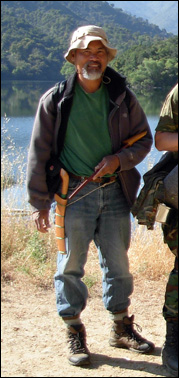
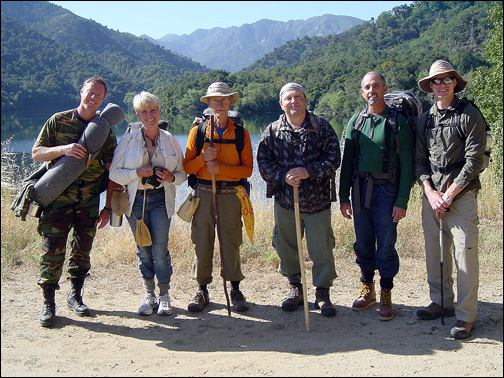
After many years of an informal break, I was asked to do another wilderness survival adventure. The request sparked my interest again and plans got underway to put together a trip. People who had basic wilderness skills were invited to attend. Unfortunately, our busy schedule in our daily lives today made it difficult to find appropriate dates for everyone. In order to get the plan moving, I eventually settled on the month of May to do the trip. Whoever wanted to attend and could make it on the adventure was more than welcome.
As with previous wilderness survival trips that I organized, there were a few restrictions on supplies and equipment. No matches, lighter or any fire making device was allowed. We would collect all of our fire making materials from the wild. No food was brought. Foraging and gathering were on the agenda. No sleeping bag or a tent could be taken. The only items you could bring were a cutting tool, metal receptacle for cooking and boiling water, wool blanket, water container, plastic tarp, trash bags and a pack to carry all your “stuff”. The option to bring all or some of the items was left to each individual. The idea was to travel as light as possible. The goal was not to simulate a survival situation, but to evaluate, strengthen and improve our wilderness skills in the backcountry. The trip should have been actually called “Wilderness Skills Adventure”.
Many people today learn and practice wilderness skills from books, YouTube, internet articles, CDs or with an acquaintance. Backyards and controlled environments become a teaching place to polish your techniques. Materials can be prepared in a timely manner or purchased ready-made. When you become proficient at fire making with that ideal hand drill or bow drill kit, take your skills to the next level and test your competence in the wild. The situation becomes different when you have to find your fire making materials to create that needed ember to keep you warm at night or to boil your water. Identifying, locating and gathering food in the wilderness becomes a serious matter when the pang of hunger begins. Building an efficient and effective shelter is important when the temperature drops at night.
The week before the trip, I arranged a group get-together to review, prepare and practice the essential skills we would need on the wilderness skills adventure. Logistics and safety plans were discussed.
The Adventure Begins
The final group that went on the wilderness skills adventure consisted of 6 men, including myself, and one woman. Everyone had backpacking experience. Two of the guys had hunting licenses. One person in the group had a fire permit.


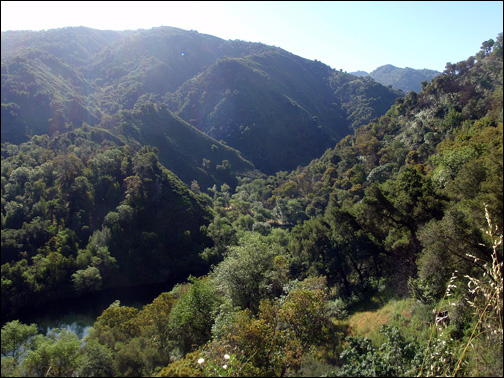
The location was a wooded gorge that had a stream running through it.
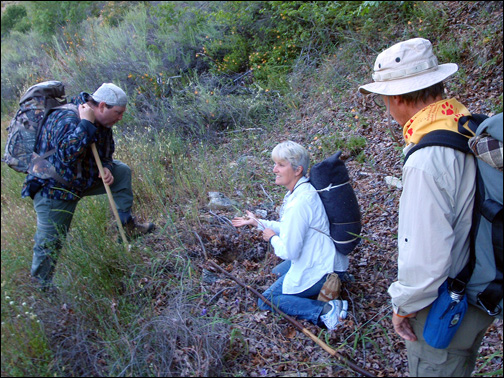
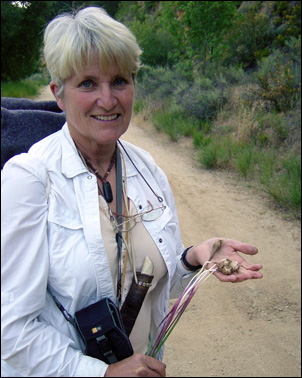
As we hiked into the understory of coast live oak, madrone, buckeye and big leaf maple trees, we took advantage of our foraging techniques. Along the trail, we spotted some of the Dichelostemma called blue dicks and the Calochortus referred to as globe lily. Utilizing a digging stick, we dug up a few of the edible corms.
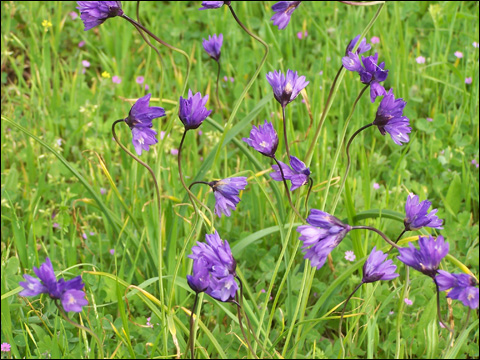
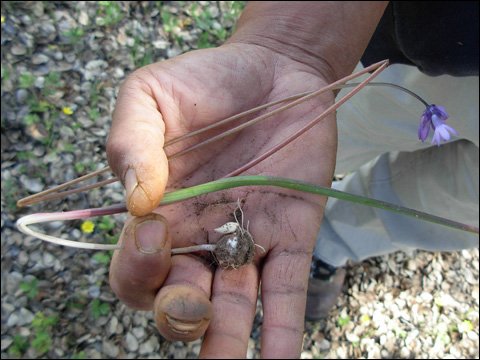
Blue Dicks (Dichelostemma capitatum)
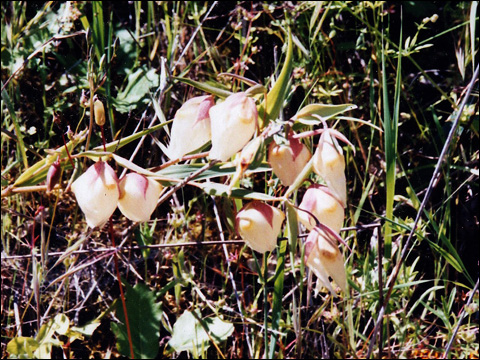
Globe Lily
Indians of California, parts of the Great Basin, and the Southwest gathered edible corms (an enlarged bulb-like base of the plant stem) as food. These corms were an important starch source in their diet. California groups dug the corms before flowering, during flowering, or after seeding, depending on the group and individual family. Traditional gathering sites were visited annually, and there were gathering tracts with different kinds of corms and bulbs owned and maintained by particular families.
California Natives had several different types of management activities to ensure future corm production at gathering sites:
1.
Breaking off cormlets from the harvested parent corms and replanting them.
2.
Sparing whole plants.
3.
Harvesting the corms after plants have gone to seed and dumping the seeds in the hole.
4.
Burning areas
5.
Irrigation
Periodic digging and thinning of the corms or separating the cormlets, and replanting them may have enhanced plant numbers and densities. Digging corms act as a form of tillage, which will increase the size of the gathering tract, aerate the soil, lower weed competition, and prepare the seedbed to increase seed germination rates. Dichelostemma capitatum populations require periodic disturbance to maintain and increase their population. Populations that become overcrowded and show reduced vigor can be divided and separated.
We used two of the management methods to guarantee that the blue dicks and globe lily did not disappear next year. We broke off the cormlets from the main corm and reburied the cormlets in the hole. We only gathered a few corms and left the other plants to continue flowering.
As we came out of the brushy area and back onto the trail, we noticed that our pants were covered with ticks. If you look back at our group photo, you'll observe that the cuffs to our trousers were tucked into our socks.
Ticks like to crawl upwards. Having your socks over the cuffs of your pants will keep the ticks from scrambling under your clothing.
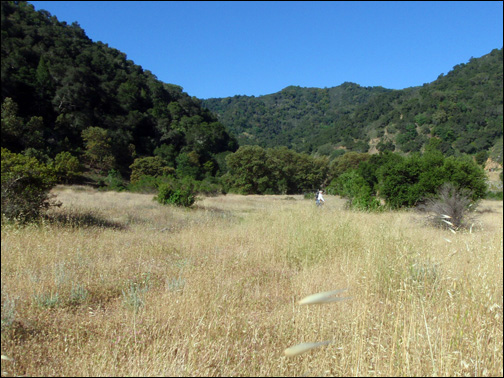
The field of non-native wild oats gave us a chance to collect grass seeds. Any invasive black mustard that we found was also harvested for food.
The seeds of various grass species were an important food source for native groups all over California. Enormous quantities of grass grains were gathered with seed beaters (fine mesh baskets shaped like scoops) and burden baskets or an open-mouth basket.
The blue skies overhead gradually gave way to the overhanging cluster of branches and foliage from the trees beside the trail. The ground was thick with poison oak sprinkled along the narrow path. The unusually late rains brought out an increased growth of poison oak this year. We had to gingerly tip-toe around any young sprouts on the ground.
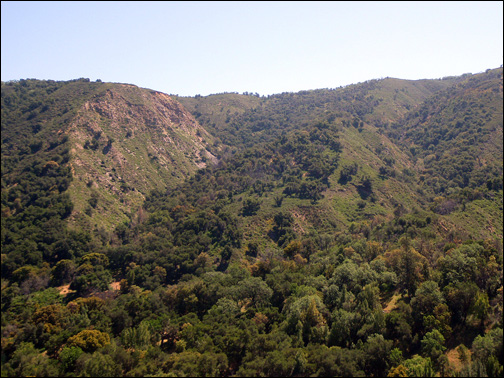
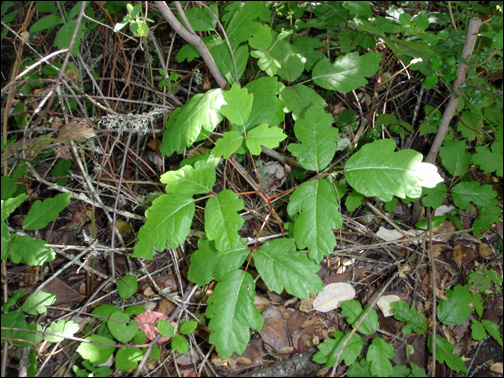
Poison oak is one of California's most prevalent woody shrubs, but also climbs, vine-like, up the side of trees. It can be found growing as single stems in grassland. The leaves are divided into three, 1.4 to 3.9 inches long, with scalloped or lobed edges.
The plant toxin, called urushiol, is the main component of the oily resin that is found on the stems and leaves of poison oak. It first causes severe itching, evolves into inflammation and then blistering when scratched. The symptoms of poison oak exposure appear within 24 to 36 hours. The uncomfortable, and sometimes painful, allergic reaction occur in approximately 75 to 85 percent of the population.
A Pomo remedy for poison oak rash involves using crushed, fresh manzanita leaves (branch tips) and boiled into a thick tea. The tea is applied as hot as can be comfortable on the rash and left to air dry. Reapply the tea a few times per day for a few days. Manzanita leaf is extremely astringent.
We deviated from the trail and headed towards the stream in hopes of finding some cattail. As we neared the water, we separated into two groups, going in opposite routes, to maximize our efforts in locating the plant. After a few minutes, one of the guys gave a shout to indicate that he had found a good stand of cattail. Unfortunately, the ground vegetation that led to the cattail was scattered with hidden mines of young poison oak. Since cattail provided a rich food source, we took our chances and carefully made our way to the waters edge.
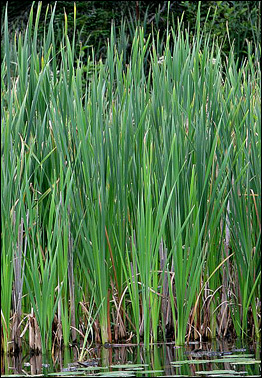
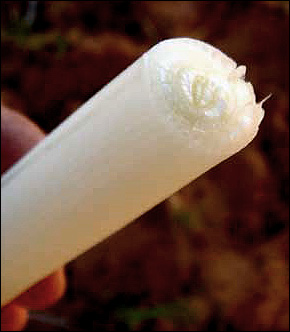
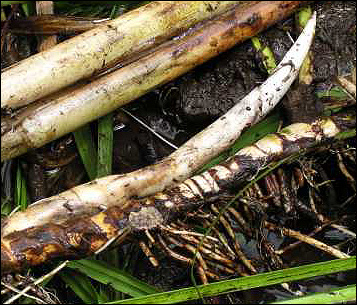
Cattail has a wide variety of parts that are edible. It’s easy to harvest, very tasty and highly nutritious. In late spring, the base of the leaves can be eaten raw or cooked when they are young and tender. The developing green flower spike can be boiled and eaten like corn on the cob. When the male flowers are mature, the pollen can be collected and used as a flour supplement or thickener. The rhizomes, which are the underground lateral stems, are an energy-rich food source when processed into flour. The starch must be scraped from the tough fibers of the rhizomes. The young emerging shoots can be sliced and cooked.
With our bounty of young cattail stems, shoots and rhizomes, we returned back to the main path. Further down the trail near an open field, a patch of dry milkweed stalks caught our eye. We took advantage of any opportunity to gather resources that we could use on the trip. The fibers of the milkweed plant provided raw material to twist into cordage for binding and lashing applications.
The green stalks with the yellow flowers on the backpack are black mustard.
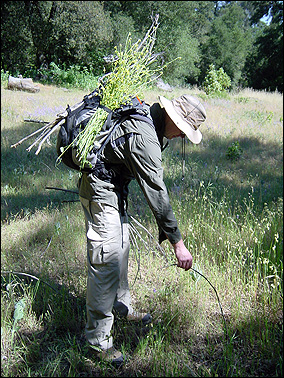
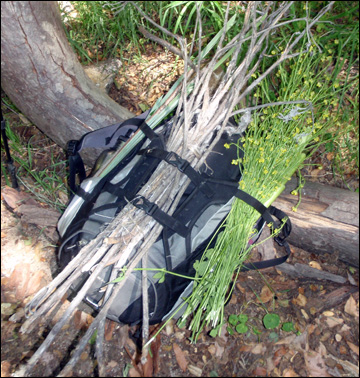
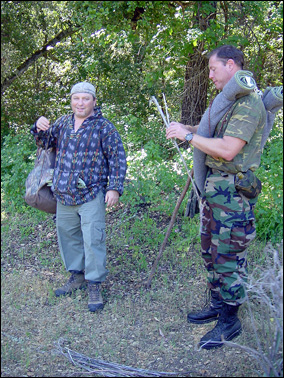
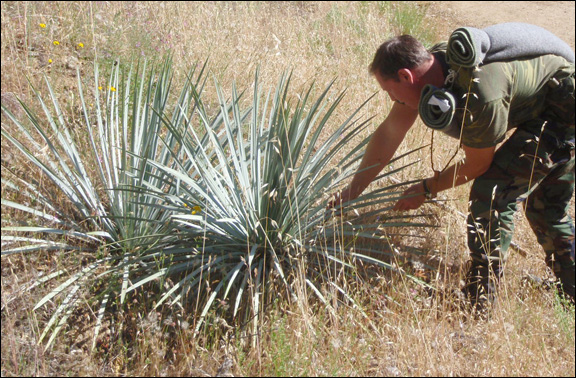
Processed yucca leaves also make strong cordage. We gathered a few leaves for our needs. We had to carefully navigate between the sharp, needle-like tips of the yucca leaves to get to the base. Ouch!
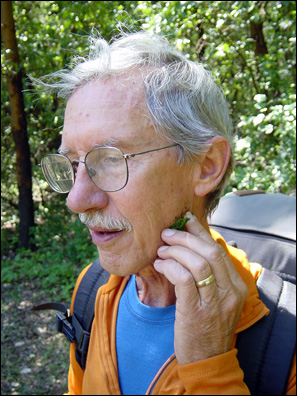
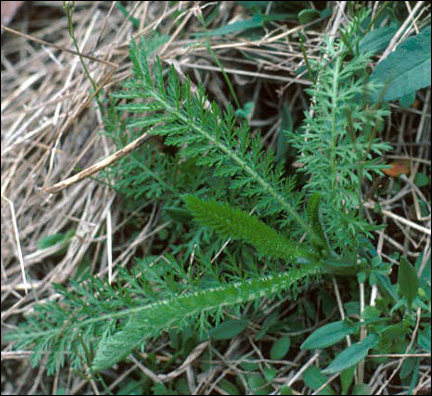
Speaking of "Ouch!", accidents can and do happen. One of the fellows was leaning over his walking stick and the wood snapped in half. The jagged end of the broken stick scraped the side of his left cheek and cut him. Luckily, it was a minor scrape, but he started to bleed from the wound. We needed to stop the bleeding. Yarrow plants were found growing in the area. The leaves were chewed to create a poultice for the injury. The wound was cleansed with water and the yarrow poultice was applied to the cut.
Yarrow plants have been used for the treatment of external skin wounds as far back as with the ancient Greeks. Used for centuries on bruises, cuts, scrapes, rashes and burns, the leaves and stems can be crushed and used on the spot to help stop bleeding and aid in healing. The volatile oils work as antibacterial and anti-inflammatory.
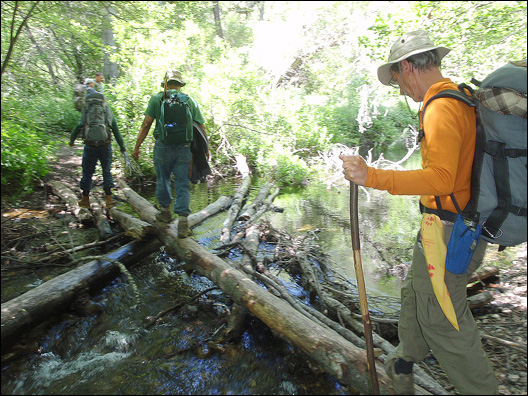
We hiked further into the wilderness and finally decided to set up base camp near a stream. The area provided for our water necessity and material resources for constructing shelters.
The first priority was starting a fire. Our initial water source in our water containers were almost empty. The rising temperatures required us to drink more water to stay hydrated. We needed to start boiling our drinking water from the stream to make it potable. Some of the people decided to take on the task of starting a fire, while the other people went out to gather dry, downed wood for the fire.
When we hiked through the wilderness, finding the right type of fire making materials were always on our mind. Buckeye branches make good hearthboards. We found a fallen buckeye limb along the route. There were also dead buckeye branches still clinging to some of the buckeye trees we encountered. We gathered a few dead wood that were not too rotten or green, but just the right density and dryness to produce a hearthboard for fire making.
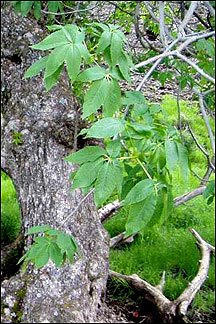
California Buckeye (Aesculus californica)
Mule fat was found growing near the stream. The long stems of the plant made excellent spindles for the hand drill technique of fire making. We had to seek and select the best mule fat stems that would suit our needs. The wood had to be dead, dry and straight in order for us to use the material instantly.
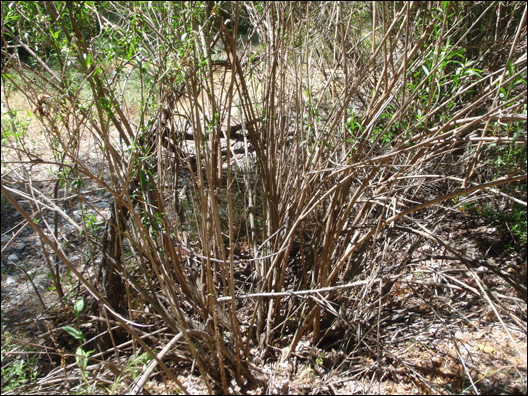
Mule Fat (Baccharis salicifolia)
The bark was removed on the mule fat and buckeye wood. The dust that is created when two woods are ground against each other must be as fine as flour to optimize ignition. If left on the wood, the hard bark tends to make a coarse dust that does not light or requires more energy to combust.
Operating as a team, we decided to use the hand drill method.
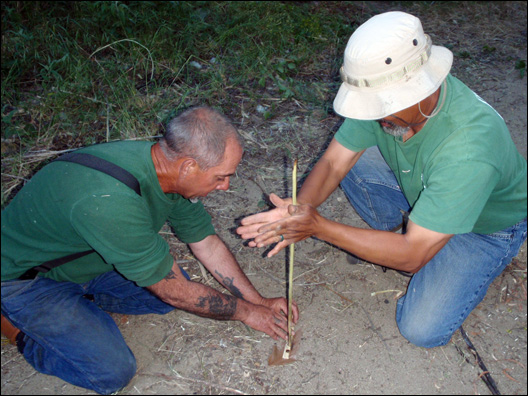
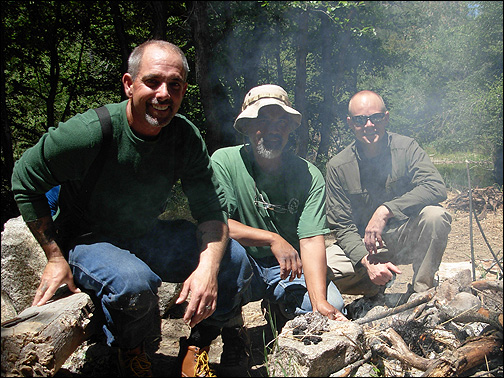
Working in tandum, we ignited the fine dust and transferred the ember to our tinder nest of cattail seeds (fluff from the seeds) and grass. While blowing into the glowing ember, the grass erupted into a ball of flame. All three of us were so proud of our accomplishment that someone decided to take a picture of us next to the fire. Unfortunately, the grass burned so fast that the fire started to die out. You can see the charred, glowing remains of the tinder nest in the lower right hand corner of the second photo above. We immediately realized we were losing our precious flame and scrambled to add more dry grass and small twigs to rekindle the fire. A lesson to be learned: "Never loose your focus when it comes to important matters in a survival situation. It could mean the difference between life and death."
Once we got a fire going, we filled our metal water containers and started the slow process of boiling our water. It took a lot of time and energy to gather fire wood to maintain the fire, but we needed to stay hydrated.
While some people watched the fire and the water, the others gathered more fire wood for the night or looked for additional edible plants in the area. Stinging nettle was found scattered throughout the stream banks. Small pockets of miner's lettuce were still growing in the shade. Yerba buena was found hiding amongst the dappled shadows of the oak trees. A few acorns lying in the soil were picked up and brought back to the camp for inspection.
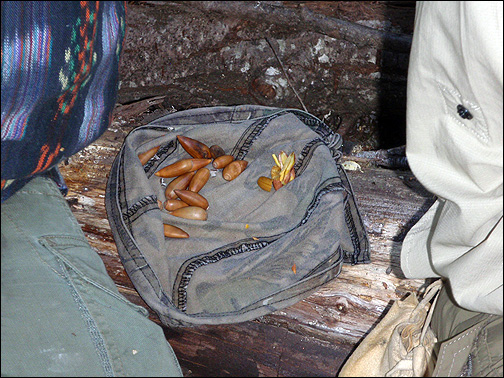
The majority of the acorn kernels were either rotten or had insect infestation. The nuts were left over from the fall season. It was not worth the energy to process and leach the four good kernels among the limited batch of acorns that we found.
Each person became responsible for their own drinkable water. Everyone kept an eye on the fire to ensure that it did not go out completely.
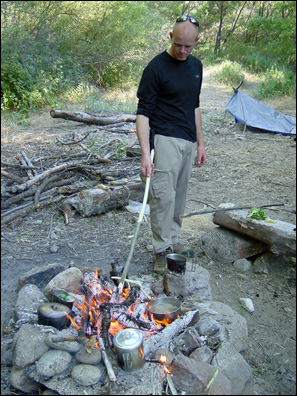
As the day progressed, we found some extra time to practice our fire making skills. Some of the guys took the opportunity to see if they could create fire by themselves using the local materials collected in the area.
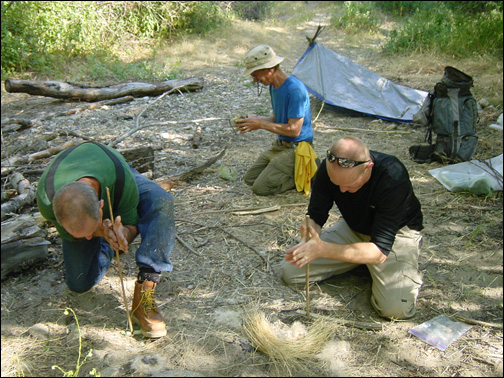
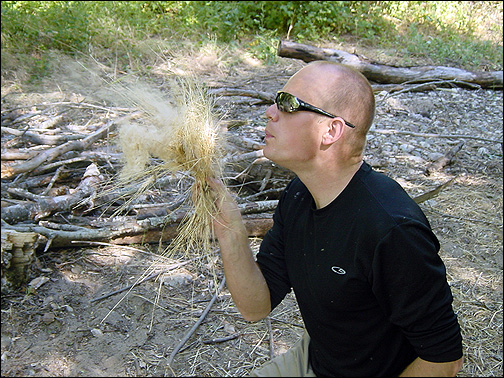
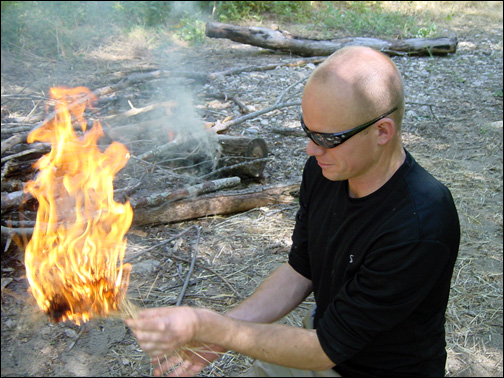
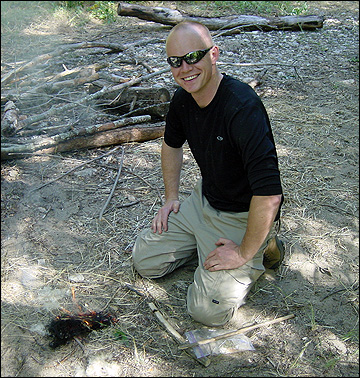
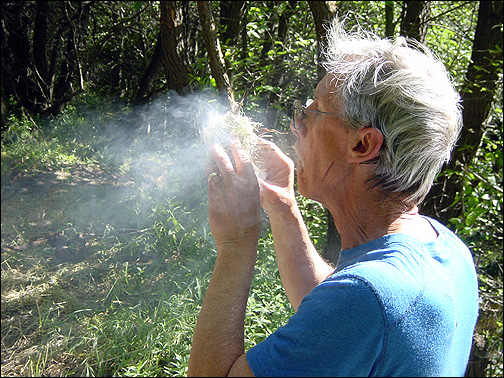
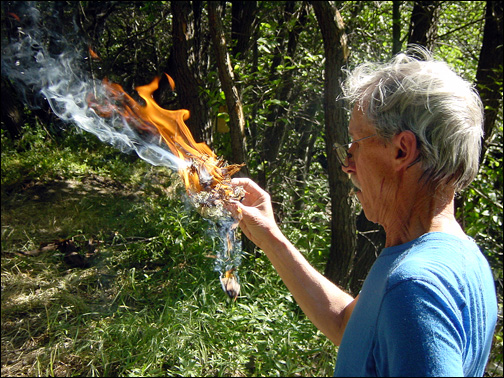
With persistence, patience and proper technique, all three guys got fire. Notice the healed cut on Richard's left cheek from the accident (the fellow in the blue T-shirt in the image above).
E-mail your comments to "Dino Labiste" at KahikoArts@yahoo.com
We hope the information on the PrimitiveWays website is both instructional and enjoyable. Understand that no warranty or guarantee is included. We expect adults to act responsibly and children to be supervised by a responsible adult. If you use the information on this site to create your own projects or if you try techniques described on PrimitiveWays, behave in accordance with applicable laws, and think about the sustainability of natural resources. Using tools or techniques described on PrimitiveWays can be dangerous with exposure to heavy, sharp or pointed objects, fire, stone tools and hazards present in outdoor settings. Without proper care and caution, or if done incorrectly, there is a risk of property damage, personal injury or even death. So, be advised: Anyone using any information provided on the PrimitiveWays website assumes responsibility for using proper care and caution to protect property, the life, health and safety of himself or herself and all others. He or she expressly assumes all risk of harm or damage to all persons or property proximately caused by the use of this information.
© PrimitiveWays 2016